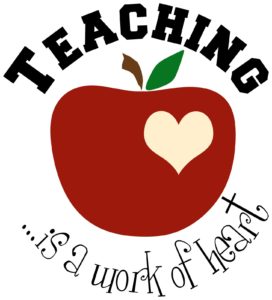 Cheating and plagiarism are common and unfortunately prevalent parts of the academic environment. Some data suggests that 60-70% of undergraduate students admit to cheating on written work or tests. Cheating is not limited to a certain type of student, and data supports that academically high-achieving students and low-achieving students cheat at the same amount (Encyclopedia of Educational Psychology, 2008). Research has varied about if age, marital status, or other demographics are correlated with cheating. One area where there does appear to be a correlation is with interest in the subject and cheating. If a student isn’t interested in the subject, then they are more likely to cheat (Anderman & Murdock, 2007). With limited data it is very difficult to accurately predict the “type” of student that will cheat. Instead of trying to identify who might cheat, let’s focus on how we might prevent cheating.
Cheating and plagiarism are common and unfortunately prevalent parts of the academic environment. Some data suggests that 60-70% of undergraduate students admit to cheating on written work or tests. Cheating is not limited to a certain type of student, and data supports that academically high-achieving students and low-achieving students cheat at the same amount (Encyclopedia of Educational Psychology, 2008). Research has varied about if age, marital status, or other demographics are correlated with cheating. One area where there does appear to be a correlation is with interest in the subject and cheating. If a student isn’t interested in the subject, then they are more likely to cheat (Anderman & Murdock, 2007). With limited data it is very difficult to accurately predict the “type” of student that will cheat. Instead of trying to identify who might cheat, let’s focus on how we might prevent cheating.
Cizek (1999) did considerable research on strategies to prevent cheating. Beyond the specifics of better proctoring tests, Cizek felt that, “Communication about honest and dishonest behavior is surely critical to deterring cheating” (p. 187). Cizek cautioned that focusing on individual test takers and test givers is not as effective as “…heightening general awareness about the problem, implementing systemic changes, infusing the educational environment with a concern for integrity, and construing responsibility for integrity as the province of everyone in the learning community” (p. 188). According to Cizek, the best strategy to prevent cheating is to make it as clear as possible, what is considered cheating. Faculty can’t just leave this to a statement in the syllabus that they assume students will read. A recent study in Australia found that only 50% of student read the academic honesty policy when it was left up to them (Gullifer & Tyson, 2013). It is important to provide this information and read it with students so we can explain and clarify what is meant by this policy.
Institutions can also clearly inform students of their expectations. Institutions with an honor code that defines expected behavior found cheating decreased by more than 50% (McCabe & Trevino, 1993). Being reminded of the honor code before a test or completion of a paper can also make the agreement more salient and further discourage cheating. Maricopa has a student conduct code and clear information regarding academic misconduct, but an honor code that students sign at the course level may be an additional benefit.
Maryellen Weimer, who writes the Teaching Professor blog, addressed this issue and provided three suggestions for what faculty could do to help prevent cheating. These items were talking more about personal integrity, discussing the bigger implications of academic dishonesty on our society, and to demonstrate integrity by following our stated policies like grading timelines and attendance at office hours (Weimer, 2015). These ideas make integrity and dishonesty a part of the fabric of a course as faculty discuss and demonstrate these ideas.
While we may not feel we have many tools to stop cheating, clearly stating what cheating means in our class, building expectations into an honor code, and ongoing discussions about integrity can help to curb some of the cheating. This ounce of prevention can also be a lot easier than trying to catch and prove that cheating occurred.
References and further reading:
Anderman, E. M., & Murdock, T. B. (2007). Psychology of academic cheating. Burlington, MA: Elsevier Academic Press.
Cizek, G. J. (1999). Cheating on tests: How to do it, detect it, and prevent it. Mahwah, NJ: Lawrence Erlbaum.
Encyclopedia of Educational Psychology (2008). Cheating. Retrieved January 3, 2016 from http://www.gmu.ac.ir/download/booklibrary/e-library/Encyclopedia%20of%20Educational%20Psychology.pdf.
Gullifer, J. M., and Tyson, G. A., (2013). Who has read the policy on plagiarism? Unpacking students’ understanding of plagiarism. Studies in Higher Education, 39 (7), 1202-1218.
McCabe, D. L., & Trevinko, L. K. (1993). Academic dishonesty: Honor codes and other contextual influences. Journal of Higher Education, 64(5), 522-538.
Miller, A. D., Murdock, T. B., Anderman, E. M., & Poindexter, A. L. (2007). Who are all these cheaters? Characteristic of academically dishonest students. In E. M. Anderman & T. B. Murdock (Eds.), Psychology of Academic Cheating (pp. 9-32). Burlington, MA: Elsevier Academic Press.
Weimer, M. (2015). Promoting academic integrity: Are we doing enough? Retrieved on December 22 from http://www.facultyfocus.com/articles/teaching-professor-blog/promoting-academic-integrity-are-we-doing-enough/
Whitley, B. E., Jr. (1998). Factors associated with cheating among college students: A review. Research in Higher Education, 39 (3), 235–274.
Image from Vozach1234








 Cheating and plagiarism are common and unfortunately prevalent parts of the academic environment. Some data suggests that 60-70% of undergraduate students admit to cheating on written work or tests. Cheating is not limited to a certain type of student, and data supports that academically high-achieving students and low-achieving students cheat at the same amount (Encyclopedia of Educational Psychology, 2008). Research has varied about if age, marital status, or other demographics are correlated with cheating. One area where there does appear to be a correlation is with interest in the subject and cheating. If a student isn’t interested in the subject, then they are more likely to cheat (Anderman & Murdock, 2007). With limited data it is very difficult to accurately predict the “type” of student that will cheat. Instead of trying to identify who might cheat, let’s focus on how we might prevent cheating.
Cheating and plagiarism are common and unfortunately prevalent parts of the academic environment. Some data suggests that 60-70% of undergraduate students admit to cheating on written work or tests. Cheating is not limited to a certain type of student, and data supports that academically high-achieving students and low-achieving students cheat at the same amount (Encyclopedia of Educational Psychology, 2008). Research has varied about if age, marital status, or other demographics are correlated with cheating. One area where there does appear to be a correlation is with interest in the subject and cheating. If a student isn’t interested in the subject, then they are more likely to cheat (Anderman & Murdock, 2007). With limited data it is very difficult to accurately predict the “type” of student that will cheat. Instead of trying to identify who might cheat, let’s focus on how we might prevent cheating.